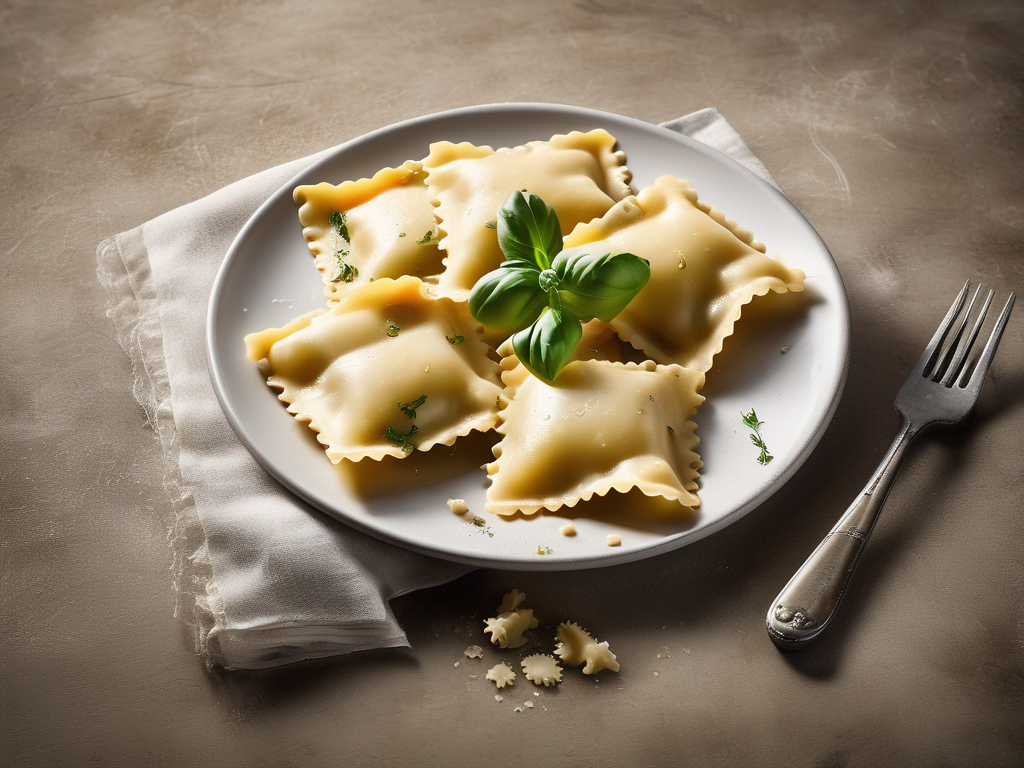
Top Tips for Storing Cooked Ravioli Leftovers to Extend Freshness
Get Your Free Food Safety Cheat Sheet
30 most common foods with instant answers. Print it and stick it on your fridge—completely free!
Top Tips for Storing Cooked Ravioli Leftovers to Extend Freshness
Cooked ravioli is a delicious and versatile dish that can be enjoyed as a quick meal or a fancy dinner. However, when it comes to storing cooked ravioli leftovers, proper food safety practices are essential to maintain freshness and prevent foodborne illnesses. In this blog post, we will discuss top tips for storing cooked ravioli leftovers to extend their freshness and flavor. (Cooked ravioli leftovers)
Importance of Proper Food Storage
Proper food storage is crucial to prevent bacterial growth, maintain food quality, and ensure food safety. When it comes to cooked ravioli leftovers, following the right storage guidelines will help you enjoy your meal for longer without compromising taste or risking your health.
Tip 1: Cool Down Properly
After cooking your ravioli, it's essential to cool it down properly before storing it in the refrigerator. Here's how you can do it:
- Allow the ravioli to cool at room temperature for about 30 minutes.
- Divide the leftovers into smaller portions to speed up the cooling process.
- Once cooled, transfer the ravioli to an airtight container for storage.
Tip 2: Refrigerate Promptly
To extend the freshness of cooked ravioli leftovers, refrigerate them promptly. Here are some tips for refrigerating cooked ravioli:
- Store the ravioli in a shallow airtight container to ensure even cooling.
- Place the container in the refrigerator within two hours of cooking.
- Keep the temperature of your refrigerator at 40°F (4°C) or below to prevent bacterial growth.
Tip 3: Label and Date
Proper labeling and dating of cooked ravioli leftovers can help you keep track of their freshness and prevent food waste. Consider the following tips:
- Label the container with the date the ravioli was cooked.
- Use labels to indicate the type of ravioli and any additional ingredients.
- Follow the "first in, first out" rule to use the oldest leftovers first.
Tip 4: Reheat Safely
When reheating cooked ravioli leftovers, it's crucial to do so safely to prevent foodborne illnesses. Follow these tips for safe reheating:
- Reheat the ravioli to an internal temperature of 165°F (74°C) before consuming.
- Use a food thermometer to ensure proper reheating.
- Discard any leftovers that have been left out at room temperature for more than two hours.
Tip 5: Freeze for Extended Storage
If you have a large batch of cooked ravioli leftovers that you won't be able to consume within a few days, consider freezing them for extended storage. Follow these tips for freezing cooked ravioli:
- Allow the ravioli to cool completely before freezing.
- Place the ravioli in a freezer-safe container or airtight bag.
- Label the container with the date and type of ravioli for easy identification.
Conclusion
Proper storage of cooked ravioli leftovers is essential to maintain freshness, prevent foodborne illnesses, and reduce food waste. By following the tips mentioned in this blog post, you can ensure that your ravioli leftovers stay safe to eat and delicious for longer periods. Remember to cool down, refrigerate promptly, label and date, reheat safely, and consider freezing for extended storage. Enjoy your delicious ravioli leftovers with peace of mind knowing that you are practicing proper food safety techniques. (Cooked ravioli leftovers)
Authoritative Food Safety References
These agencies and university labs inform every tip and health precaution we publish.
USDA FoodKeeper – Cold Storage Guidelines
Official refrigerator, freezer, and pantry timelines maintained by the U.S. Department of Agriculture.
Visit USDA FoodKeeperFDA Produce Safety Rule & Grower Guidance
Field-to-fridge handling practices that prevent contamination of fruits, vegetables, and leafy greens.
Visit FDA Produce SafetyCDC Foodborne Illness Prevention Hub
Surveillance-backed guidance on pathogens, symptoms, and steps to reduce foodborne illness risk.
Visit CDC Food SafetyUC Davis Postharvest Technology Center
University research detailing optimal storage atmospheres for produce after harvest.
Visit UC Davis PostharvestPenn State Extension – Home Food Preservation & Safety
Peer-reviewed extension bulletins on safe canning, chilling, and reheating practices.
Visit Penn State ExtensionGet Your Free Food Safety Cheat Sheet
30 most common foods with instant answers. Print it and stick it on your fridge—completely free! Want more? Upgrade to the complete guide with 70+ foods.
Scan your food directly and get instant safety info using our AI-powered camera feature.